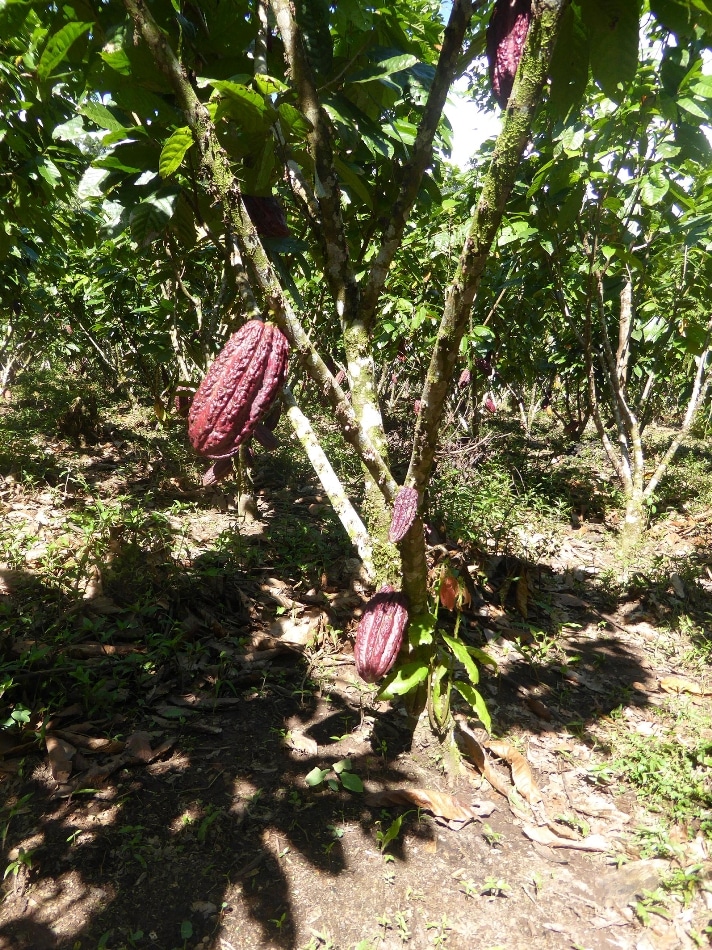Apr 8 2019
In an effort to protect the rainforest, the Peruvian government had introduced a program several years ago.
 The cultivation of cocoa plants is often part of the sustainable production systems implemented by the participating communities. (Image credit: Renzo Giudice/Uni Bonn)
The cultivation of cocoa plants is often part of the sustainable production systems implemented by the participating communities. (Image credit: Renzo Giudice/Uni Bonn)
Conversely, a recent analysis carried out by the Center for Development Research (ZEF) at the University of Bonn has demonstrated that its impact is negligible. However, the investigators also have some good news—the effectiveness could be considerably increased by three measures. The results of the study have been reported in the Journal Environmental Research Letters.
In their recent publication, the researchers examined the “National Forest Conservation Program”, or NFCP for short. The Peruvian government launched this program in 2010 so as to mitigate the deforestation of the rainforest. Primarily funded by international donors and public Peruvian sources, the aim of the program is to target indigenous communities living in the Amazon area.
A compensation payment, which is the equivalent of three dollars every year and per hectare of forest, was given to given to communities that not only succeeded in effectively decreasing deforestation on their territory but also established sustainable production systems. Technical assistance was also provided to the communities to apply sustainable production systems.
We have investigated the extent to which the program has successfully contributed to forest conservation.”
Renzo Giudice, PhD Candidate and Researcher, Center for Development Research (ZEF), University of Bonn
Giudice is a Peruvian and his doctoral thesis was supervised by Professor and Dr Jan Börner, whose working team studies the economic aspects of sustainable land use.
Giudice has examined the development of forest cover in 50 native communities taking part in the program. For the sake of comparison, Giudice used 50 other communities that had not participated in the NFCP; however, they were otherwise quite analogous to those of the first group.
“We were able to prove that the loss of forest among NFCP participants was somewhat lower,” he stated as a key outcome. “However, this difference was very small.”
What was the reason behind this? Giudice and his coworkers quote two major reasons for this—on one aspect, communities themselves can decide which portion of their land they elected as a protected area.
They often chose the strategy that made the most economic sense. Particularly areas that are already hardly explains threatened by deforestation were declared protection zones.
Renzo Giudice, PhD Candidate and Researcher, Center for Development Research (ZEF), University of Bonn
These are areas that are either inaccessible or inappropriate for agriculture.
Violations only punished leniently
Moreover, violations of the program’s conditions were not consistently punished by the government. The people residing in villages in the Amazon area are among the poorest social classes in Peru. As a result, the NFCP has two main goals—one is to safeguard the forest and the other is to on the other to fight poverty.
This is probably the reason why those responsible turned a blind eye when the environmental goal was not achieved.
Renzo Giudice, PhD Candidate and Researcher, Center for Development Research (ZEF), University of Bonn
The team suggested that the program can be re-hauled to boost its effectiveness in a way that is socially responsible. In addition, equivalent recommendations for action were also rendered to those responsible for the program during the time of the analysis along with the German Agency for International Cooperation (GIZ): firstly, the participating communities would need to enroll their whole territory and not just the designated parts, and secondly, the government should persist more consistently with regards to complying with the established protection objectives. If rules are violated, it does not necessarily have to result in the exclusion of a native community from the program, but merely to a reduction in the compensation payment by an amount equivalent to the loss of forest. This would mean that land use would continue to be a voluntary decision of the indigenous community.
In addition, there is another point—those responsible must mainly provide participation in the program to only those communities whose areas are most endangered in the ecological sense. Although the government had prepared a list of the most important areas beforehand, the criteria for this ranking were not selected correctly and were not communicated in a transparent manner. For example, some of the funds were devoted to areas where the forest is still doing relatively well anyway. “The available money should be distributed more efficiently,” emphasized Giudice. “The aim must be to benefit above all the indigenous communities where the forest is most threatened.”
The Amazon rainforest is known to be an exceptionally vital ecosystem that represents the foundation of life for an infinite number of people. It is also a critical climate factor, both for its carbon storage service and also as a motor for worldwide water cycles.